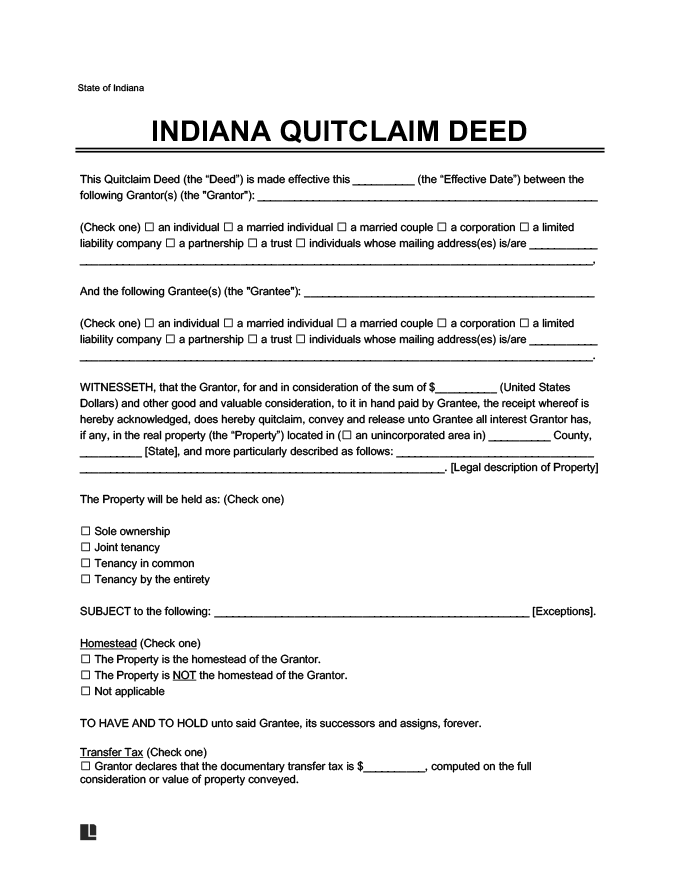Protect yourself and the other party (whether the grantor or grantee) when conveying property without warranties by learning about the filing process for a quitclaim deed in Indiana.
Step 1: Assess the Right Deed Type for Your Needs
Determine if a quitclaim deed is appropriate for your property transfer needs. Evaluate your relationship with the other party. If you’ve known them for a long time and trust them, you can more confidently execute a quitclaim deed even though it doesn’t come with covenants. Consider a different property transfer method if you have an uncertain or unestablished relationship.
Step 2: Gather Relevant Information and Paperwork
Gather the original deed so you can refer to it for the property’s legal description. If you misplaced the original deed or otherwise can’t access it, request a copy from your County Recorder’s office.
Step 3: Fill out the Quitclaim Deed
Compose your quitclaim deed with all pertinent details, including the grantee’s and grantor’s names and the property’s legal description. Use the language in Ind. Code § 32-21-1-15 to ensure the document is valid and enforceable.
Step 4: Have the Form Notarized
Do not sign or date the form when you initially fill it out. Because Indiana requires you to have the document notarized, you must sign and date the form in the presence of a notary (Ind. Code § 32-21-2-3). The notary cannot validate the form unless they see you sign it.
A notary will attach their seal and sign the form to authenticate the document. The grantor should provide their government-issued ID as proof of identity when taking the document to be notarized.
Step 5: Complete Additional Documents
Complete the Sales Disclosure Form (Form 46021) per Ind. Code § 6-1.1-5.5. Furthermore, if the property transfer is a sale of residential property, the grantor must complete a Residential Property Disclosure Statement per Ind. Code § 32-21-5-10.
Step 6: Record the Document
Take the document to your County Recorder’s office so they can record it. After they complete the filing process, a record of the property transfer will appear in state records.
Please plan to pay all fees associated with the property conveyance, which can vary by county. Contact your County Recorder’s office to learn about relevant fees.
